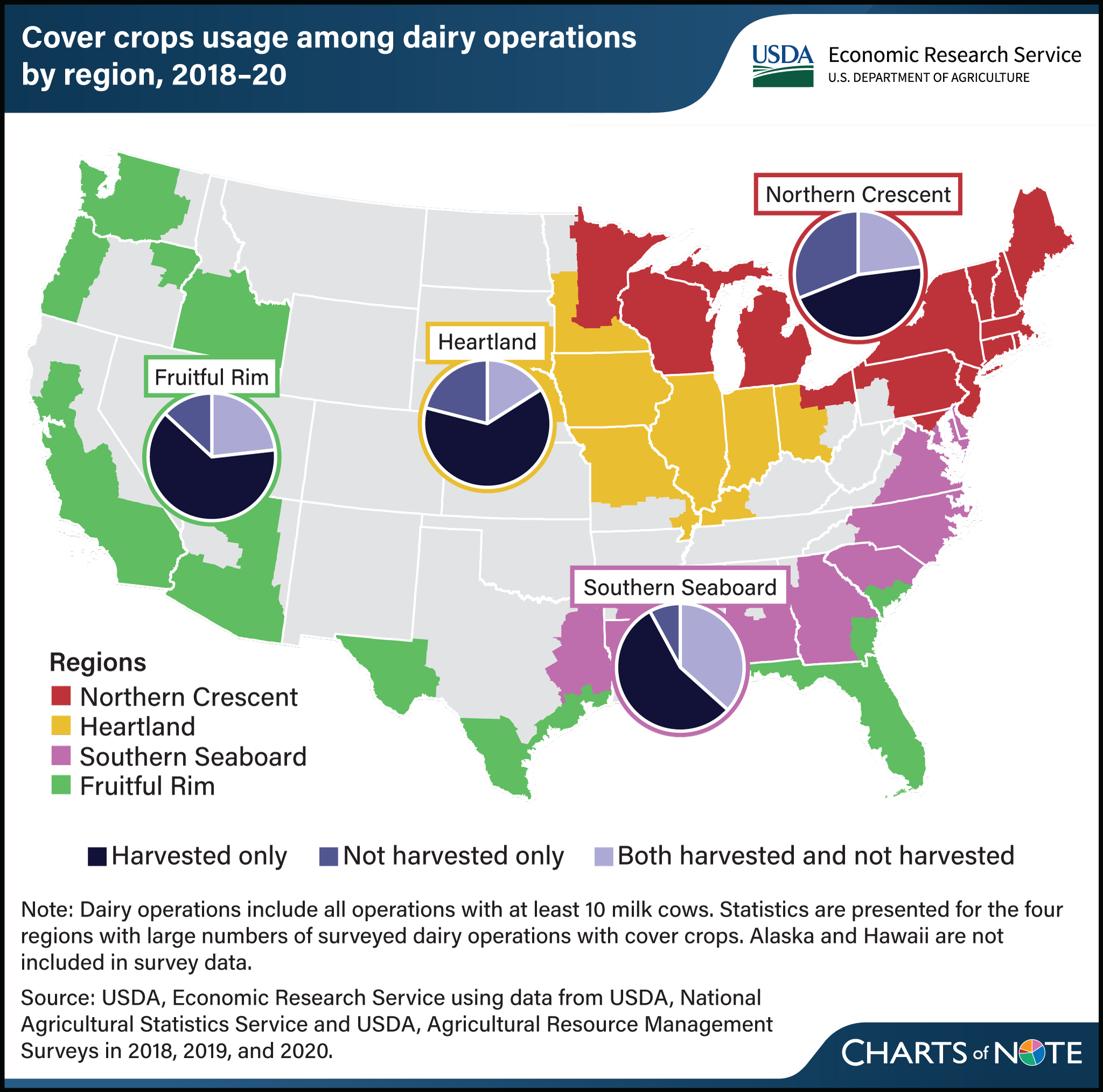Cover crops planted by dairy producers are often harvested
- by Maria Bowman
- 6/17/2024

More than half of dairy operations that plant cover crops reported harvesting all their cover crop acreage for forage or other on-farm use between 2018 and 2020. While not all dairy operations have cropland, many of those who plant cover crops use them to provide feed for their herd, such as by harvesting a cover crop like cereal rye or triticale for silage to later feed to dairy cattle. Cover crops can also be planted and left unharvested to improve water quality and soil health. From 2018 to 2020, the Agricultural Resource Management Survey asked producers how many acres of cover crops they harvested for forage or other on-farm use, and how many acres of cover crops went unharvested. Exclusively harvesting cover crops was relatively more common in the Fruitful Rim and Heartland regions, where 63 percent of dairy operations only harvested acreage of cover crops in each region. The Northern Crescent had a higher proportion of dairy operations that only reported unharvested cover crops (31 percent). Information on cover crop practices can be found in the USDA, Economic Research Service report Cover Crops on Livestock Operations: Potential for Expansion in the United States, published in May 2024.
We’d welcome your feedback!
Would you be willing to answer a few quick questions about your experience?

